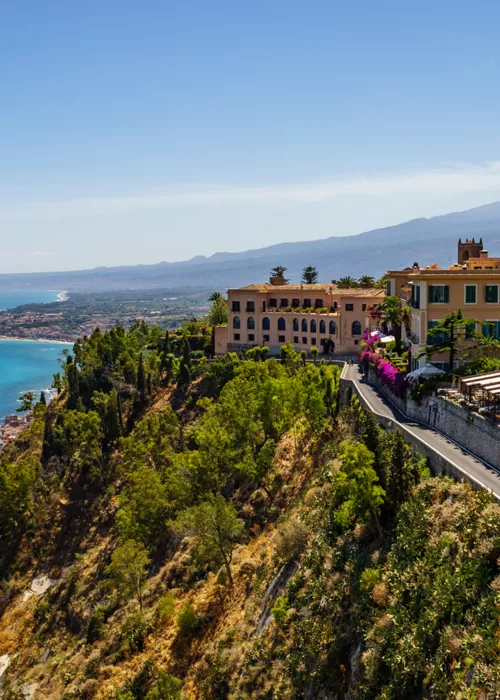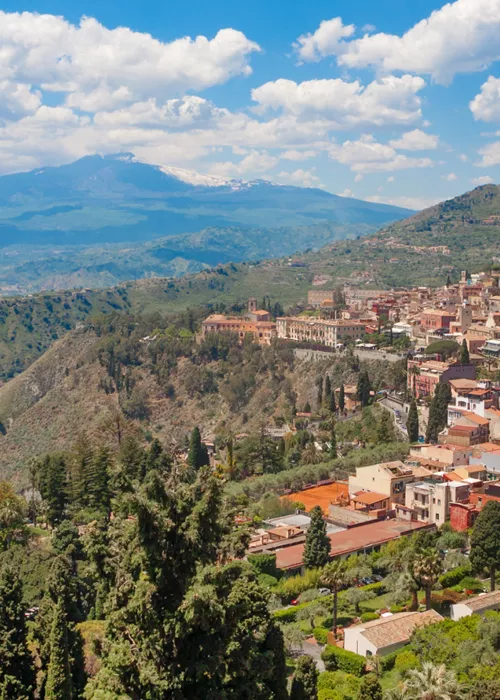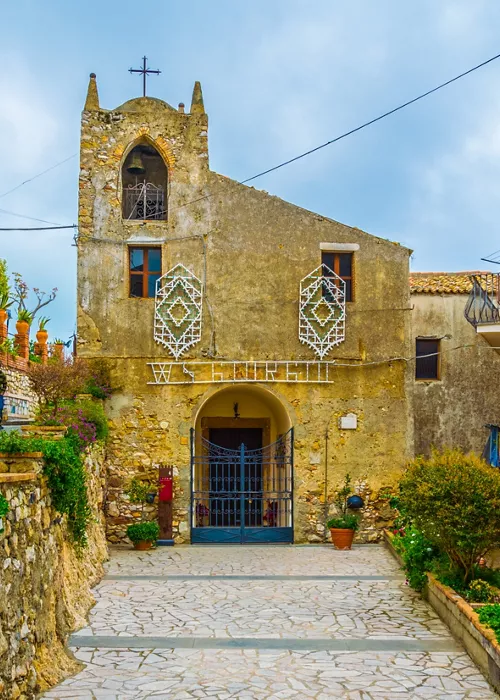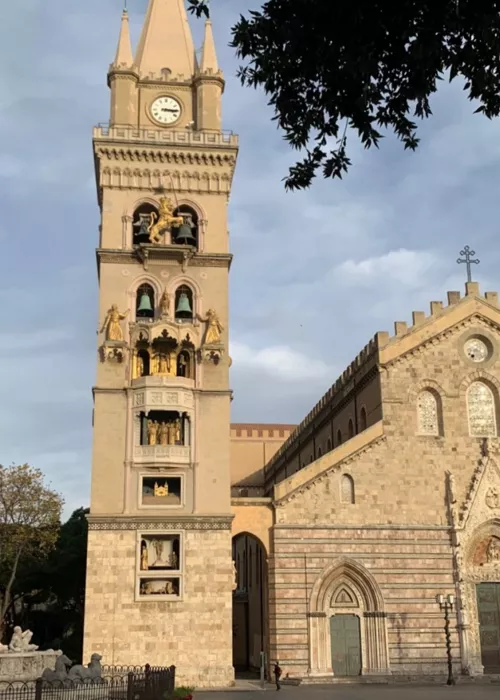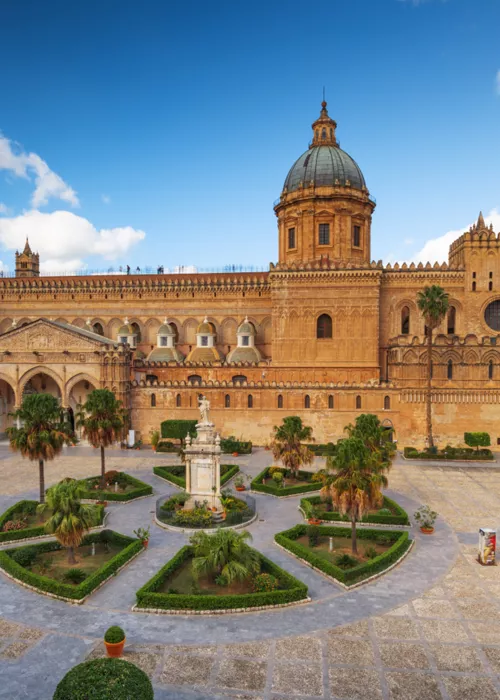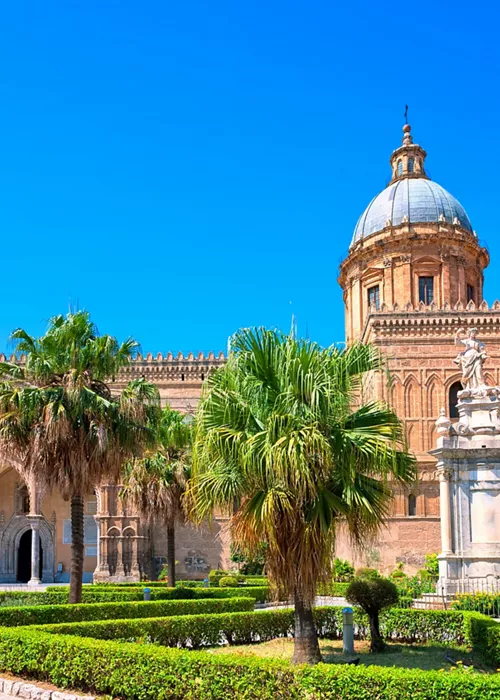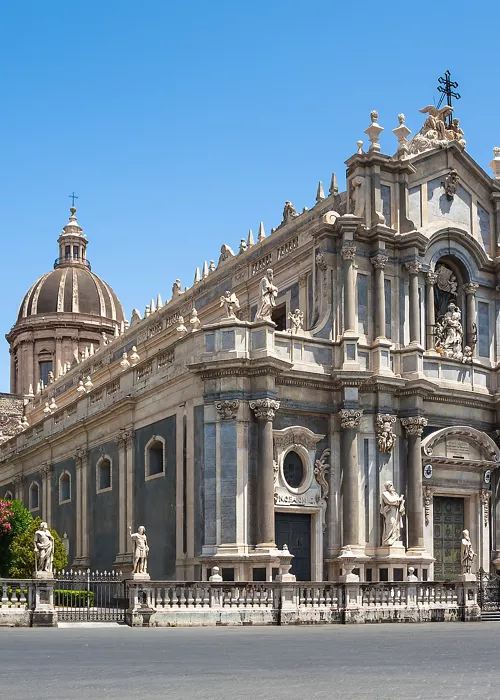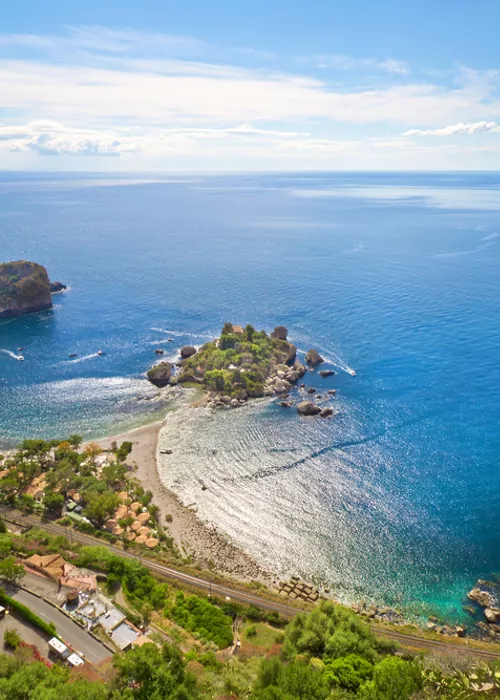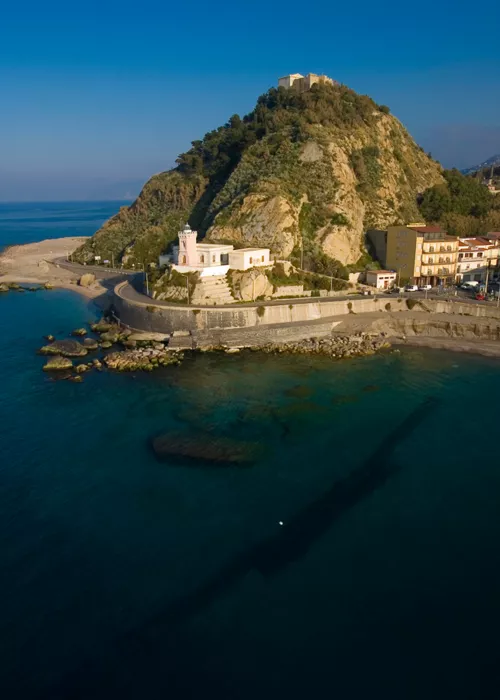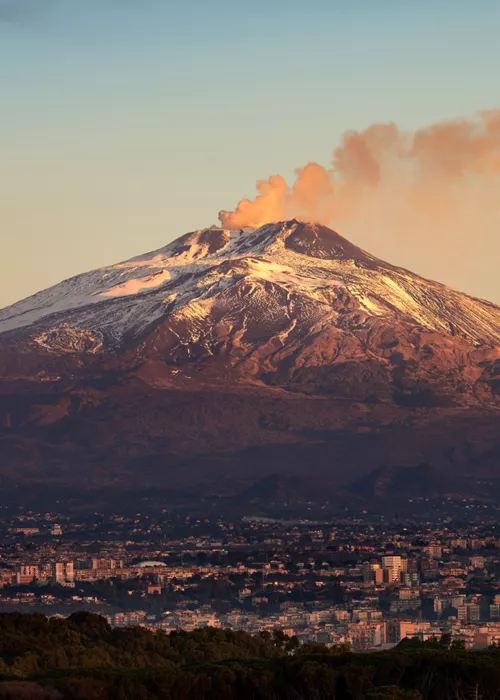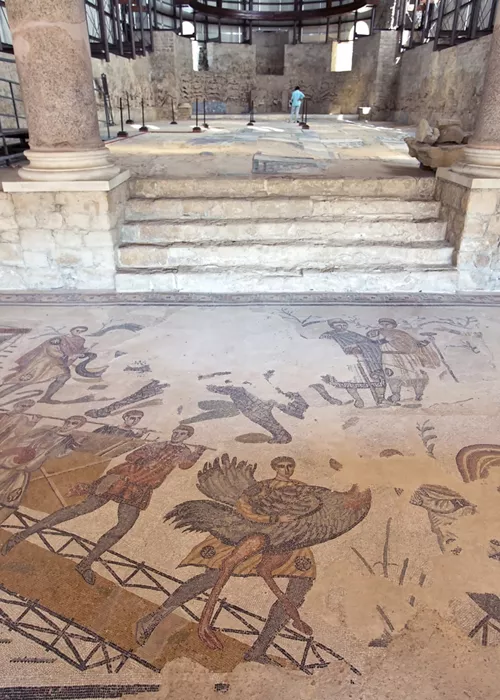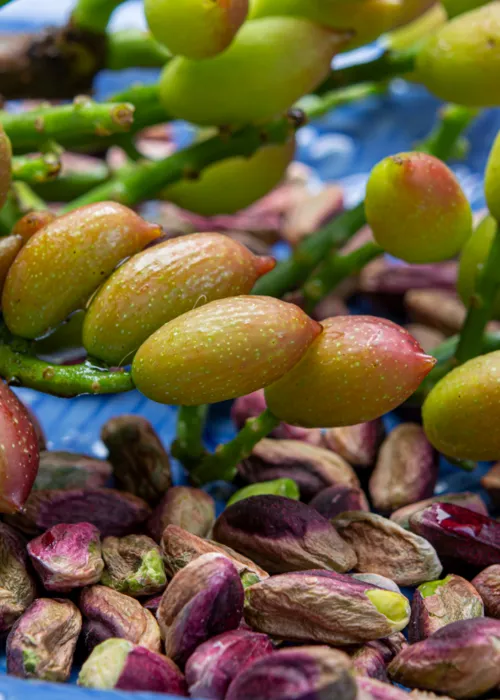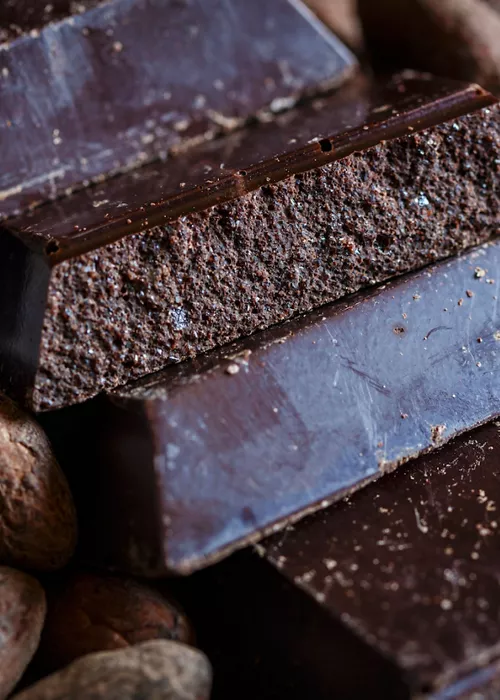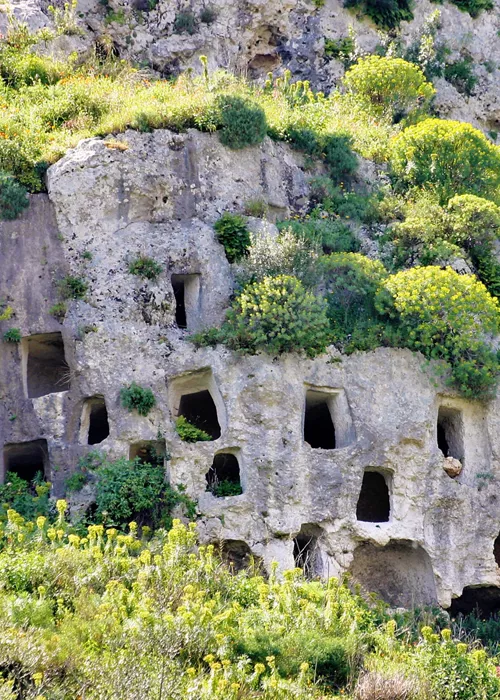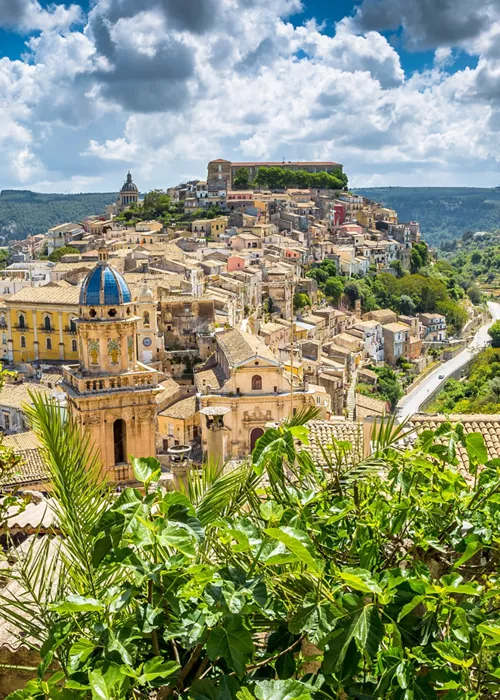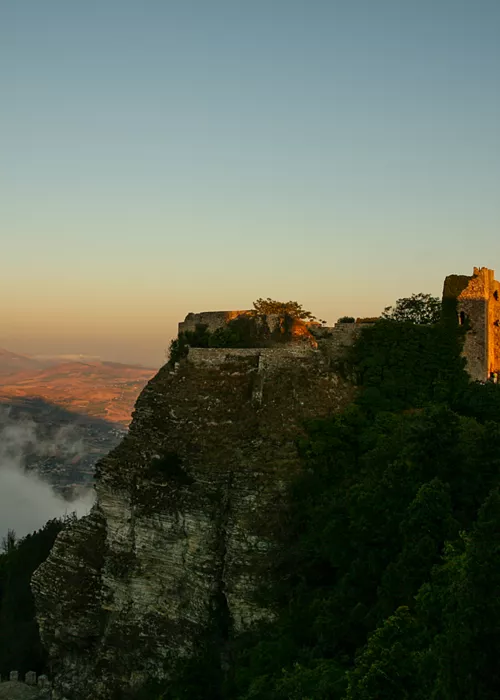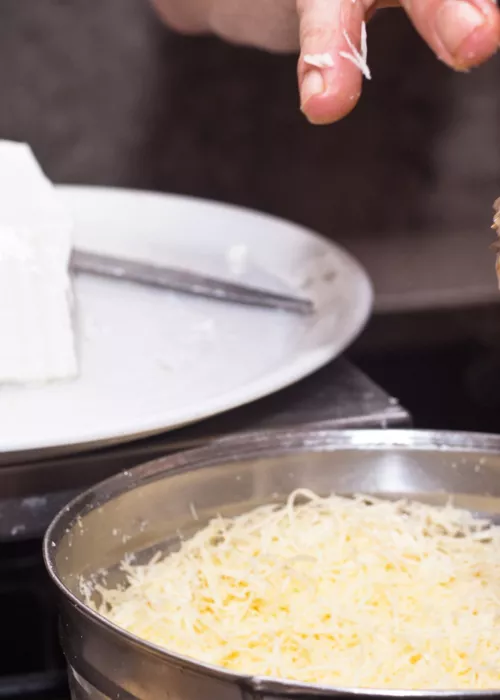Taormina, a natural platform overlooking the sea
4 minutes
A marvellous location and unique natural beauty have earned this city the nickname of Pearl of the Ionian Sea, making it the most famous and important holiday resort, not only in Sicily.
Taormina welcomes you at any time of the year with its Mediterranean climate, its historic centre rich in landmarks, and its spectacular Hellenistic theatre offering a spectacular view over the turquoise sea and a view stretching as far as the coast of Calabria, the city of Syracuse and the summit of Mount Etna.
Packed already, are you?
History and interesting facts about Taormina
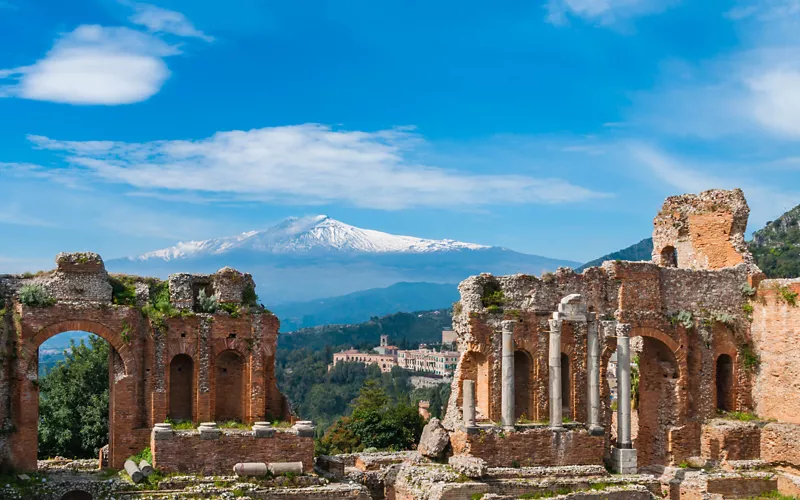
The history of Taormina is shrouded in fascination and mystery. In 358 BC, the Siculians who had settled on Mount Taurus welcomed the survivors of the Greek colony of Naxos. There they founded Tauromènion and gave the city the appearance of a Greek colony, with the agora, the acropolis and the Ancient Theatre. The tyranny of Dionysius II did not spare Taormina, which was annexed to the Hellenistic Kingdom of Sicily until the Romans declared the whole of Sicily a Roman province.
With the fall of Rome, Taormina became the capital of Byzantine Sicily. The city was conquered by the Arabs, destroyed and rebuilt as the Emirate of Sicily. In 1079, the Norman Roger I conquered the city after conquering the rest of the island.
During the Norman period, the city enjoyed a long period of prosperity. Taormina was not so lucky under the rule of the Spanish and French, until it was rediscovered in recent times as a tourist destination full of splendour.
What to see in Taormina: 6 places not to be missed
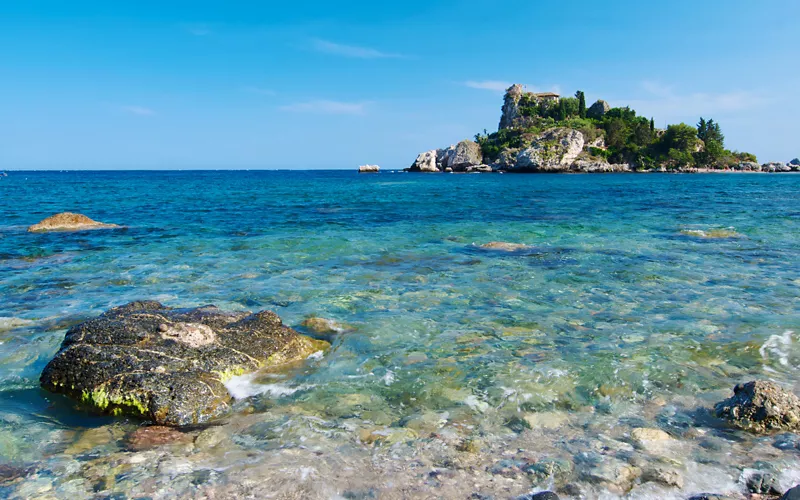
Between important monuments and historical sites, choosing what to see in Taormina can be very overwhelming. If you don't want to miss a thing, here are 6 must-see places to put on your to-do list.
Isola Bella is the symbol of Taormina along with the Greek Theatre, a picturesque and evocative little island that became the Isolabella Regional Nature Museum in 2011. You can visit it from Tuesday to Sunday from 9 am to sunset and walk to it from the city centre via a small path from the Isola Bella belvedere
.The Greek Theatre is the other symbol of Taormina. It features a cavea carved into the rock in perfect harmony with its surroundings and offers a unique vantage point: to the south is Mount Etna, the Bay of Naxos and the city of Taormina, while to the north you can admire the Calabrian coast with the Strait of Messina. The visit takes less than an hour and if you want to take perfect photos go in the late afternoon while waiting for the sunset.
Another must-see spot in Taormina is Piazza IX Aprile, a panoramic terrace overlooking the bay below. Packed with outdoor cafés, the square is the perfect place where you can sip a granita, marvel at the beauty of Taormina and catch a glimpse of Mount Etna in the distance.
From the terrace, walk to Piazza Duomo to admire the 13th-century cathedral basilica of San Nicolò di Bari on one side and the Baroque-style fountain named after the 4 fountains on the other.
4 tips for things to do in Taormina
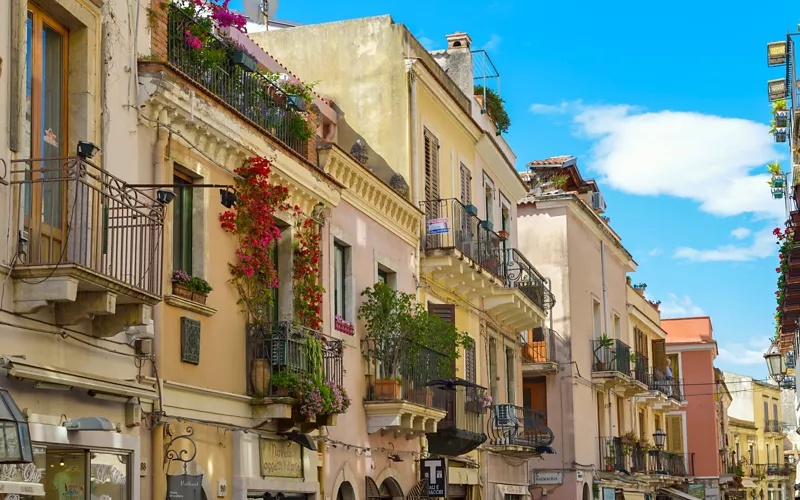
Corso Umberto is the beating heart of Taormina. The true essence of the city can be experienced here and if you are looking for advice on what to do in Taormina, you should start your visit by wandering through the shops and alleyways until you reach Palazzo Corvaja, a historic building that houses the Museum of Taormina Arts and Traditions.
Between a granita and an ice-cream, head for Taormina's Villa Comunale, built in the mid-19th century as the private residence of English noblewoman Lady Florence Trevelyan. Its distinguishing features are the so-called Victorian follies, eccentric constructions commissioned by Lady Florence herself in a style that mixes Romantic with Gothic taste and strong oriental influences.
A few steps away from the villa, you cannot miss the Naumachia of Taormina, a long brick wall interrupted by 18 alternating large apsidal niches and as many small niches.
What to eat in Taormina: 5 specialities
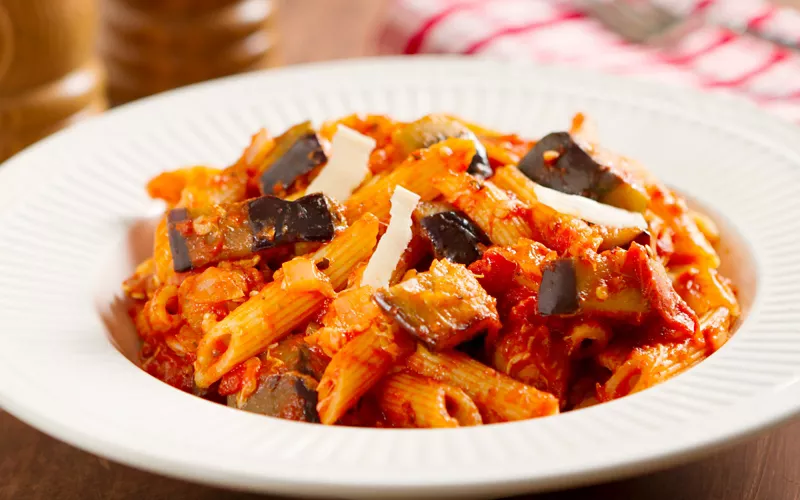
Sicily is world famous for good food, with the city of Taormina being no exception. The culinary temptations are plentiful here and found all over: try to solve the dilemma of what to eat in Taormina by following our 5 tips.
- The swordfish rolls are a must. They have Arabic influences and are prepared with pine nuts, sultanas, lemon and a pinch of mint.
- Sicilian caponata takes its name from its original preparation with capone fish, but over the years it has evolved into a delicious vegetarian dish with aubergines, olives, onion and tomato.
- Pasta alla norma is a celebration of aubergines, fried and combined with tomato sauce and a generous helping of salted ricotta. If you love starters, try pasta with sardines, a tasty dish that combines the strong flavour of sardines with the sweetness of sultanas and pine nuts.
- Now to dessert, and in Taormina it is forbidden to leave the table without a dessert: try the nzuddi, crunchy almond biscuits enriched with orange shavings, or the cuzzole, pieces of bread dough fried and sprinkled with sugar, and then let us know.
Unique places in Taormina
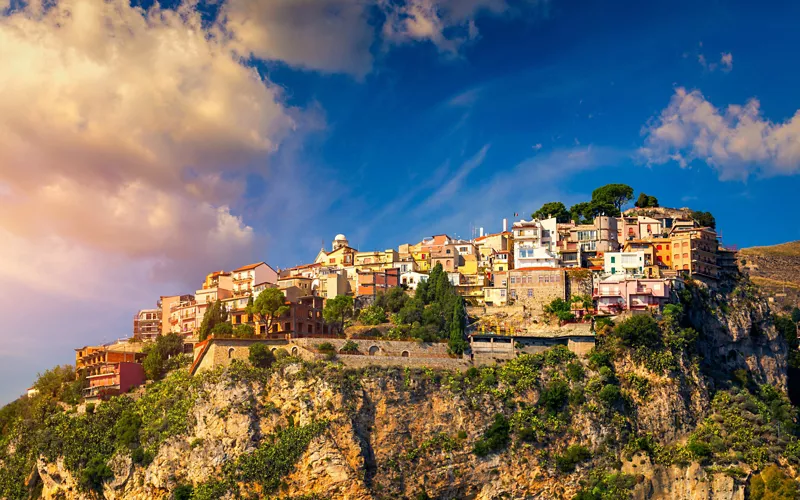
Taormina is a city full of secrets and unusual places to discover away from tourist destinations.
The Duca di Cesarò municipal gardens, for example: the city's green lung, they surround Taormina's municipal villa and are the ideal place to stroll in the hottest hours of the day, taking advantage of the shelter offered by the rich vegetation.
Then Castelmola, an ancient village located at the top of the town. Starting from Taormina, you can climb up to the belvedere Piazza Sant'Antonio and from there, walking through the narrow streets winding through the town, reach the ancient Roman arch at the top of the limestone steps.
A little further on is the Castle, an ancient defensive fortress that houses the Museum of the Sicilian Middle Ages.


